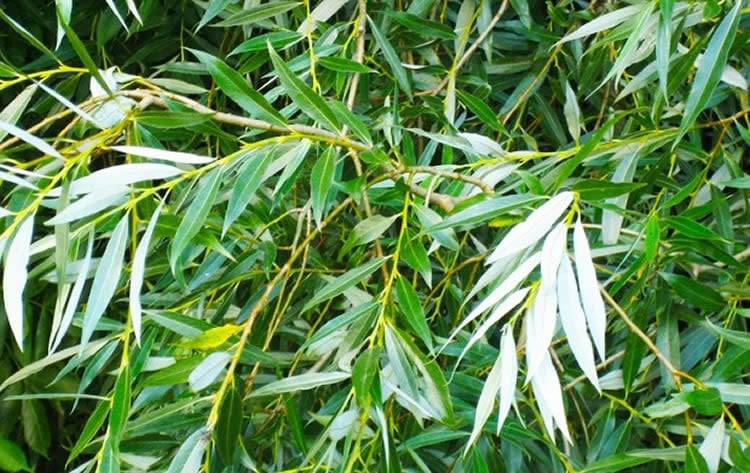Summary: Researchers claim six previously identified plant extracts could help to delay aging.
Source: Concordia University.
Montreal researchers clear a major hurdle in the fight for longevity.
Hearing loss, brittle bones, sagging skin, a deteriorating mind: these are just some of the issues associated with growing old. For millennia, humans have fought the process of aging using everything from fountains of youth to pricey face creams, all to no avail. But a group of Montreal-based researchers is coming ever closer to achieving healthy longevity — armed with the power of science.
In a study recently published in Oncotarget, researchers from Concordia University and Idunn Technologies assess how six previously identified plant extracts can delay aging by affecting different signalling pathways that set the pace of growing old.
Vladimir Titorenko is a biology professor and the study’s senior author. He says that the potential of using these plant extracts for delaying the onset of age-related diseases is underscored by the fact that Health Canada classifies them as safe for human consumption. Five of them are recommended by the federal department as health-improving supplements with clinically proven benefits.
In the study, Titorenko and his co-authors confirmed that one extract is particularly effective: Salix alba, more commonly known as white willow bark, is the most potent aging-delaying pharmacological intervention yet described.
To make this identification, the researchers used yeast to test the effectiveness of the plant extracts. But why yeast? That’s because, at a cellular level, aging progresses similarly in yeast and humans. In both, the pace of aging is defined by a distinct set of chemical reactions arranged into several cascades. These cascades, which scientists call “signalling pathways,” regulate the rate of aging in a wide range of organisms.
Using yeast — the best cellular aging model — Titorenko and his colleagues monitored how the information flowing through each of these signalling pathways was affected by each of the six aging-delaying plant extracts.
“It’s known that some of these signalling pathways delay aging if activated in response to certain nutrients or hormones,” he says. “These pathways are called ‘anti-aging’ or ‘pro-longevity’ pathways. Other signalling pathways speed up aging if activated in response to certain other nutrients or hormones. These pathways are called ‘pro-aging’ or ‘pro-death’ pathways.”
Co-author Éric Simard, CEO of Idunn Technologies, explains that each of the six aging-delaying plant extracts targets a different anti-aging or pro-aging signalling pathway.
It is especially noteworthy that this study revealed the following features of the six plant extracts as potential tools in decelerating chronic symptoms and diseases of old age:
- They imitate the aging-delaying effects of the caloric restriction diet in yeast
- They slow yeast aging by eliciting a mild stress response
- They extend yeast longevity more efficiently than any lifespan-prolonging chemical compound yet described
- They delay aging through signalling pathways implicated in age-related diseases
- One of them delays aging via a previously unknown pathway
- They extend longevity and delay the onset of age-related diseases in organisms other than yeast
“This study is an important step forward for science because these signaling pathways could eventually delay the onset and progression of chronic diseases associated with human aging,” says Simard, who has recently published a new book on the topic.

“These diseases include arthritis, diabetes, heart disease, kidney disease, liver dysfunction, stroke, neurodegenerative diseases like Parkinson’s, Alzheimer’s and Huntington’s diseases, and many forms of cancer.”
Funding: This study was supported by grants from the Natural Sciences and Engineering Research Council of Canada and the Fonds québécois de la recherche sur la nature et les technologies.
Source: Cléa Desjardins – Concordia University
Image Source: NeuroscienceNews.com image is adapted from the Concordia press release.
Original Research: Full open access research for “Six plant extracts delay yeast chronological aging through different signaling pathways” by Vicky Lutchman, Pamela Dakik, Mélissa McAuley, Berly Cortes, George Ferraye, Leonid Gontmacher, David Graziano, Fatima-Zohra Moukhariq, Éric Simard and Vladimir I. Titorenko in Oncotarget. Published online July 18 2016 doi:10.18632/oncotarget.10689
[cbtabs][cbtab title=”MLA”]Concordia University. “Six New Groups of Molecules Could Be Key to Delaying Aging.” NeuroscienceNews. NeuroscienceNews, 7 September 2016.
<https://neurosciencenews.com/aging-genetics-molecules-longevity-4985/>.[/cbtab][cbtab title=”APA”]Concordia University. (2016, September 7). Six New Groups of Molecules Could Be Key to Delaying Aging. NeuroscienceNews. Retrieved September 7, 2016 from https://neurosciencenews.com/aging-genetics-molecules-longevity-4985/[/cbtab][cbtab title=”Chicago”]Concordia University. “Six New Groups of Molecules Could Be Key to Delaying Aging.” https://neurosciencenews.com/aging-genetics-molecules-longevity-4985/ (accessed September 7, 2016).[/cbtab][/cbtabs]
Abstract
Six plant extracts delay yeast chronological aging through different signaling pathways
Our recent study has revealed six plant extracts that slow yeast chronological aging more efficiently than any chemical compound yet described. The rate of aging in yeast is controlled by an evolutionarily conserved network of integrated signaling pathways and protein kinases. Here, we assessed how single-gene-deletion mutations eliminating each of these pathways and kinases affect the aging-delaying efficiencies of the six plant extracts. Our findings imply that these extracts slow aging in the following ways: 1) plant extract 4 decreases the efficiency with which the pro-aging TORC1 pathway inhibits the anti-aging SNF1 pathway; 2) plant extract 5 mitigates two different branches of the pro-aging PKA pathway; 3) plant extract 6 coordinates processes that are not assimilated into the network of presently known signaling pathways/protein kinases; 4) plant extract 8 diminishes the inhibitory action of PKA on SNF1; 5) plant extract 12 intensifies the anti-aging protein kinase Rim15; and 6) plant extract 21 inhibits a form of the pro-aging protein kinase Sch9 that is activated by the pro-aging PKH1/2 pathway.
“Six plant extracts delay yeast chronological aging through different signaling pathways” by Vicky Lutchman, Pamela Dakik, Mélissa McAuley, Berly Cortes, George Ferraye, Leonid Gontmacher, David Graziano, Fatima-Zohra Moukhariq, Éric Simard and Vladimir I. Titorenko in Oncotarget. Published online July 18 2016 doi:10.18632/oncotarget.10689







